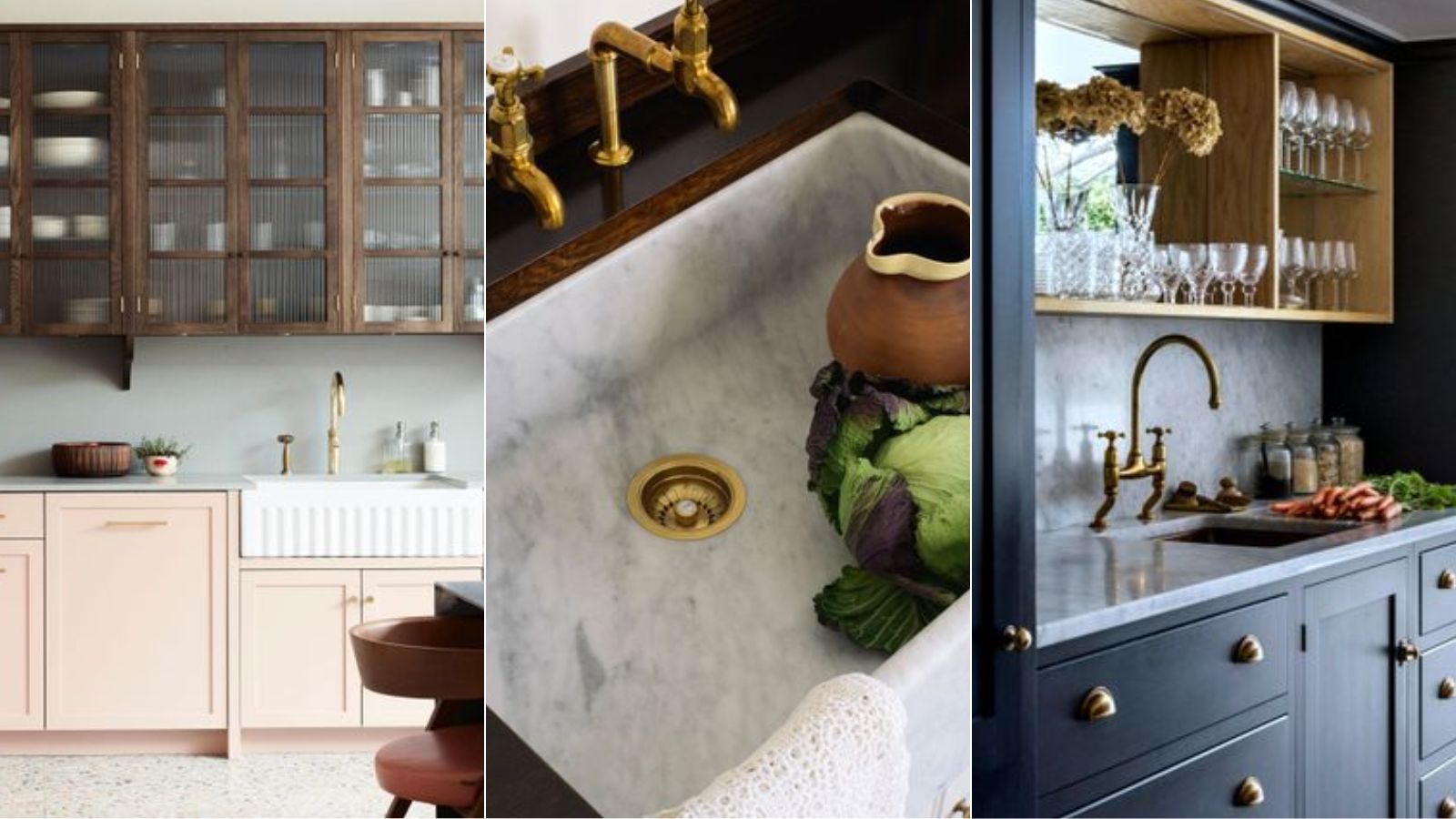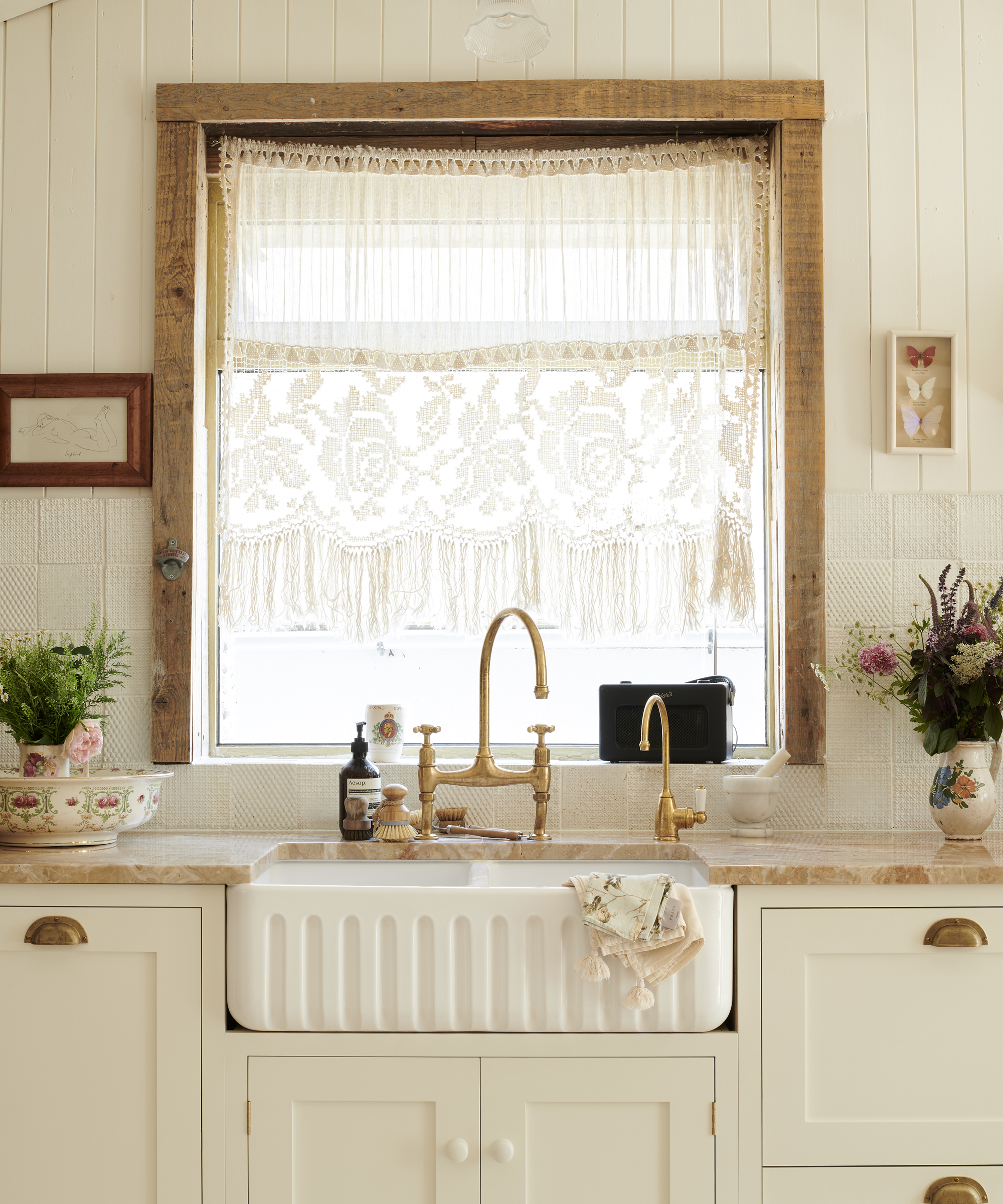How to fix a clogged kitchen sink – the expert-approved methods for major and minor clogs
The best methods to unclog a kitchen sink without damaging your pipes


There's nothing worse than a clogged kitchen sink to put a halt to all your kitchen activities – meaning a pile-up of dirty dishes, not to mention the smell – which is why it's essential to know the solutions to this problem.
Well, our experts are here to help, providing their top six ways to unclog a sink.
Covering the top three ways to gently unclog minor blockages with items you'll most likely have at home, and the three methods for stubborn blockages that won't budge, our professionals' advice will ensure your kitchen never sufferers for long with a blocked drain.
How to fix a clogged kitchen sink
If you're wondering why your sink won't drain, the answer will most likely be that it is due to grease or fat build up which catches other debris, creating a blockage.
To banish this blockage, you should first begin by using natural cleansers.
Best method to fix a clogged kitchen sink: Natural cleansers

Experts are divided about the best method to clean your kitchen sink since it depends on the type of blockage you are dealing with. However, many agree that the best method to start with for minor blockages is the baking soda and vinegar method.
'This is because it is safe for your pipes and can often clear minor clogs caused by organic matter. It's also a good preventive measure to use periodically to keep your drains smelling fresh and running smoothly,' says Austin Fain, CEO of Perfect Steel Solutions.
'Baking soda and vinegar can create a chemical reaction that can dissolve the clog in your sink drain,' explains Mark Morris, master plumber at Deluxe Plumbers.
1. First, 'Pour half a cup of baking soda down the drain, followed by half a cup of white vinegar,' advises Mark Morris.
2. Then, 'Let the mixture sit for about 15 minutes, then flush it with hot water.'
This is the simplest yet effective method to unclog a kitchen sink. This chemical reaction can break down grease and debris, effectively cleaning a kitchen sink drain. If your pipework is very old, it may be wise to avoid using vinegar and baking soda, and try some of the options below, instead.
1. Boiling water

'Boiling water can be surprisingly effective for a minor clog caused by grease or soap residue,' explains Janille Mangat, cleaning specialist at VMAP services.
Mark Morris instructs, 'Boil a kettle of water and pour it slowly down the drain in several stages, waiting for a few seconds between each pour. Be careful not to burn yourself or damage your pipes with the hot water.'
Design expertise in your inbox – from inspiring decorating ideas and beautiful celebrity homes to practical gardening advice and shopping round-ups.
This can often dislodge and wash away the obstruction.

Janille Mangat has been working as a cleaning specialist at VMAP services for more than 2 years and has extensive experience with residential and cleaning services.
2. A plunger

Unsurprisingly, this versatile tool is high up on our list of the best ways to unclog a kitchen sink. But how do you use a plunger to unclog your sink?
Fantastic Service's domestic cleaning expert and supervisor Petya Holevich advises, 'Before you use your plunger, make sure there's enough water in the sink or tub to cover the bottom of the plunger. Create a tight seal around the drain and push and pull the plunger vigorously for about 20 to 30 seconds.'
Repeat this process until the water drains freely. The suction and pressure created by the plunger should often break up the clog.
If you're in the market to buy, we recommend this specialist Master MPS4 Sink & Drain Plunger from Amazon.
3. Drain snake

For more stubborn clogs, using a drain snake is an invaluable method that can be effective for other areas too, including for unclogging a bathtub drain. Be sure to first check the manufacturer's instructions before using a drain snake to avoid damaging the pipes.
Janille Mangat explains, 'A plumbing snake or auger can reach deep into the pipes to physically remove blockages. Insert the snake into the drain and turn the handle clockwise to break through the clog. Once broken, retract the snake and flush the drain with water.' We suggest this Drain Snake Auger Clog Remover from Walmart.
In the place of a drain snake or auger, Petya Holevich recommends using a wire hanger: 'For this method, you’ll need to get a wire hanger from your closet or wardrobe, straighten it out as much as possible and curl one of the ends into a small hook.
'Fish the curled end into the drain and it should be able to catch any debris that has accumulated and blocked the drain. Pull out the hanger, clean it, and repeat the process as many times as necessary until it stops pulling residue out. Once you’re finished, run hot water down the drain to get rid of any remaining small particles.'.
4. High-pressure water jetting

For stubborn blockages that won't budge when using the gentler methods mentioned above, the best solution can be high-pressure water jetting.
Roman Smolevskiy, owner of A+ Construction & Remodeling suggests, 'For a more thorough and potentially long-term solution, I recommend high-pressure water jetting. This involves using high-pressure water to blast away blockages deep within your drain. The force of the water can break apart even the most stubborn of blockages and is especially effective for blockages further down the pipe that traditional methods might not reach.
'It's best to hire a professional for this method to ensure safety and effectiveness,' Roman Smolevskiy continues.
'As always, if a clog persists or you're uncertain about the nature of the blockage, it's best to get in touch with a professional plumber. A stubborn blockage might indicate more severe underlying plumbing issues.'
5. A wet/dry vacuum

Mark Morris advises, 'A wet/dry vacuum can suck out the clog in your sink drain with its powerful suction force.
'Set the vacuum to its wet mode and cover its vent to prevent a mess.
'Attach a hose or nozzle to the vacuum and place it over the drain opening.
'Turn on the vacuum and let it run for about 10 minutes or until the clog is gone.'
A wet vacuum can be extremely effective at dislodging stubborn clogs in a pipe, and even if it can't remove all the debris it will ensure the dirt gets closer to the sinkhole, which can then be pulled out easily.
FAQs
How can I check where a blockage is in your kitchen sink?
Josh McCorkell, a plumbing expert and the owner of Plumbing Lab explains, 'Often, the blockage is located in the U-shaped pipe underneath the sink. Place a bucket beneath it and unscrew the P-trap. Clear out any obstructions and reattach.'
You can also check for blockages in the garbage disposal: 'If your sink comes equipped with a garbage disposal, it could be the source of the clog. Sometimes, merely activating it can help clear out blockages,' says Roman Smolevskiy, owner of A+ Construction & Remodeling.
Prerna Jain, owner of Ministry Of Cleaning suggests, 'You can use an Allen wrench to manually rotate the disposal's flywheel and free any jammed food particles.'
What are the best drain cleaners for blockages?
Prerna Jain, the owner of Ministry Of Cleaning says, 'Consider using biological drain cleaners containing enzymes that break down organic matter. These cleaners are less harsh on your plumbing and the environment.'
We recommend this DIGEST PLUS Foaming Drain Cleaner and Odor Eliminator from Amazon.
How to prevent a drain from getting blocked?
Rosie Elliot, owner of Kitchen Appliance Answer recommends, 'As a preventative measure, invest in mesh drain covers to catch food scraps and hair.' You can find mesh drain covers at Walmart.
'I also recommend pouring 1/2 cup salt down the drain weekly to scour and deodorize.
'Pro tip: avoid pouring fats and oils down the sink – they solidify and cling to pipes,' adds Rosie Elliot.
The most common form of a kitchen sink clog is a grease clog, which happens
when oil or fat goes down the drain and congeals in your plumbing.
When unclogging your kitchen sink, avoid using any type of harsh chemical that could potentially damage your plumbing. Instead, use simple solutions such as baking soda and vinegar, pouring boiling water down your drain, and using a plunger to loosen up hardened grease. This might take several repetitions, but it's a pretty reliable method.
If this fails to unclog your sink, use drain snakes and professional methods such as high-pressure water jetting and a wet-dry vacuum if the blockage persists. It's always better to begin with the less harsh methods to avoid damaging your pipes and consult a plumber first.

Lola Houlton is a news writer for Homes & Gardens. She has been writing content for Future PLC for the past six years, in particular Homes & Gardens, Real Homes and GardeningEtc. She writes on a broad range of subjects, including practical household advice, recipe articles, and product reviews, working closely with experts in their fields to cover everything from heating to home organization through to house plants. Lola is a graduate, who completed her degree in Psychology at the University of Sussex. She has also spent some time working at the BBC.